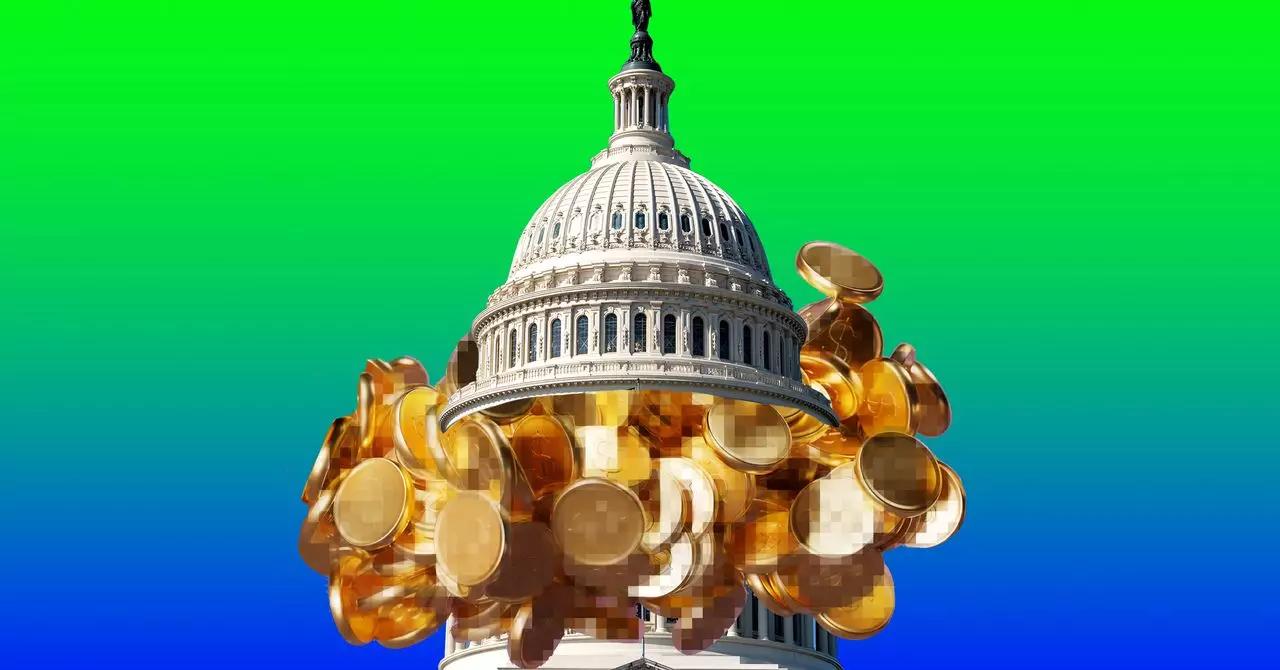Stablecoins have emerged as a groundbreaking innovation in the evolving landscape of digital finance. Advocates herald them as a means to reinforce the US dollar’s dominance as the world’s preeminent reserve currency. By providing a digital, easily transferable version of fiat currency, stablecoins promise to facilitate cross-border transactions, especially in regions where local currencies are unstable or undervalued. This feature could dramatically enhance economic activity in developing countries, significantly reducing transaction costs and increasing financial inclusion. Furthermore, the proliferation of stablecoins might enable the United States to access inexpensive funding by boosting demand for US Treasury bonds, thus maintaining its fiscal and monetary strength amidst a rapidly changing global economy.
Moreover, proponents argue that stablecoins could serve as a vital infrastructure for digital economies, powering everything from remittances to decentralized finance (DeFi) applications. The capacity for near-instant settlements and frictionless cross-border transfers provides a compelling case for their widespread adoption. If integrated with proper oversight, stablecoins could be a force multiplier for economic growth and innovation, democratizing access to financial services and modernizing the global monetary system.
The Shadow of Instability: Risks That Demand Vigilance
However, these promising visions come with significant caveats. Critics voice legitimate concerns about the safety and stability of the financial system in the face of an unchecked stablecoin boom. If a major issuer were to mismanage reserves—either through negligence or outright fraud—the fallout could be catastrophic. Such a collapse could trigger a domino effect, prompting panic among users and leading to runs on other stablecoins. As issuers scramble to liquidate reserve assets to meet redemptions, the value of US government bonds could plummet, putting taxpayers at risk of footing the bill for any bailout measures necessary to contain the chaos.
Further complicating the picture is the potential for regulatory lapses. Without stringent oversight, stablecoins could become tools for financial mischief or even illicit activities. The danger is exacerbated when private actors, potentially with conflicts of interest, are permitted to issue digital currencies that function as private monetary units, further blurring the lines between traditional banking and unregulated digital markets. History warns us that unregulated financial innovations often sow seeds of systemic risk; stablecoins, if poorly managed, may well follow that pattern.
The Political Maze: Corruption, Influence, and Legislation
The regulatory landscape surrounding stablecoins is riddled with controversy. The recent legislative moves, such as the proposed GENIUS Act, highlight deep political tensions. Critics point out that the legislation might inadvertently legitimize practices that could benefit specific political figures or their affiliated entities—particularly considering instances like the World Liberty Financial stablecoin deal linked to figures associated with Donald Trump. This raises serious questions about conflicts of interest and the potential for public resources to be exploited for private gain under the guise of innovation.
Many lawmakers who initially opposed such initiatives have, under pressure or due to lobbying efforts, softened their stance. Notably, some members have expressed concern over the lack of robust legal frameworks to prevent government officials or their families from profiting from crypto-related ventures—an issue that fundamentally undermines public trust. The absence of decisive enforcement mechanisms and the DOJ’s silence on these matters deepen fears that regulatory capture could thwart genuine efforts to regulate the sector effectively.
The broader issue here is whether policymakers can strike a balance between fostering innovation and safeguarding integrity. If current legislative efforts are too lenient or influenced by vested interests, the risk of widespread corruption and systemic destabilization only grows. Conversely, overly restrictive policies could stifle innovation, prolonging the industry’s growth and its potential benefits.
The trajectory of stablecoins holds vast potential, but it demands unwavering vigilance. These digital assets could transform the global financial ecosystem, fostering economic growth and increasing access to capital. Yet, history and recent developments caution us that without strong regulation, stability could give way to chaos. Critical scrutiny of legislative proposals and active oversight by regulators are essential to ensure that stablecoins serve the broader public interest rather than narrow political or private gains.
The challenge is clear: we must cultivate an environment where innovation thrives within a framework of accountability. The global financial system’s complexity, combined with the influence of powerful interest groups, means that this balancing act will be intricate and fraught with challenges. Nevertheless, embracing this technological evolution—while remaining ever-critical and vigilant—is the key to unlocking stablecoins’ true potential as a force for good.

